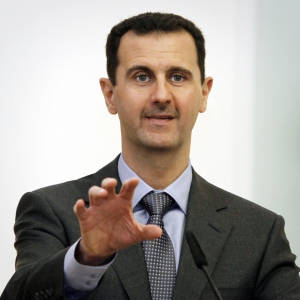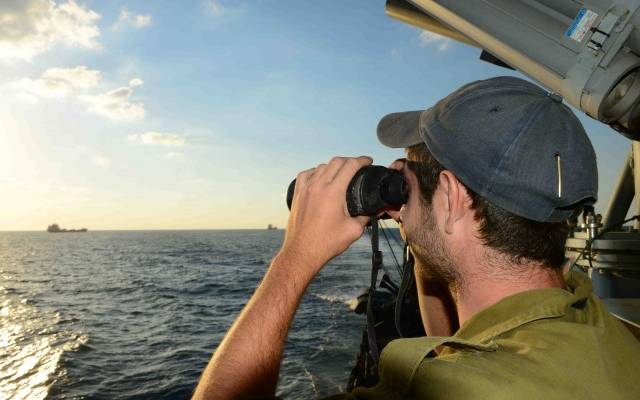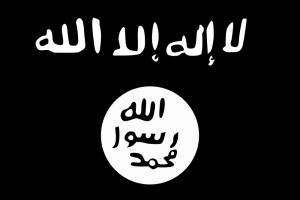The balance of deterrence is on the verge of being upset, and it remains to be seen how Iran and Hezbollah will choose to reshape the rules of the game after last week’s attack.
By: Omer Einav, The Institute for National Security Studies (INSS)
The attack in the Golan Heights near Quneitra on January 18, 2015, which killed Hezbollah operatives and Iranian Revolutionary Guards al-Quds Force commanders, was attributed to Israel. Iran and Hezbollah appear to be seeking an appropriate violent response to restore deterrence and signal to Israel that they will not accept a change in the rules of the game, but without this leading to war. A January 19 headline in the Lebanese daily as-Safir read: “More than a Response, Less than a War.” The axis has a number of possible responses of varying degrees of intensity, some of which were implemented in the past. Israel’s starting point must be that this incident is part of the conflict against the Iran-Hezbollah axis, which will not exercise restraint in the face of targeted killings of its officials. It remains to be seen how Iran and Hezbollah will choose to reshape the rules of the game given the conditions dictated to them from within and without.
In the background to the attack in the Golan Heights near Quneitra on January 18, 2015 are last year’s air strikes in Syria on convoys of weapons sent to Hezbollah by Iran. With the most recent attack, however, which was attributed to Israel and killed Hezbollah operatives and Iranian Revolutionary Guards al-Quds Force commanders, Hezbollah, Iran, and Syria have apparently perceived a change by Israel of the rules of the game. Thus, this attack, which was actually a targeted killing of a symbolic figure, Jihad Mughniyeh, and Mohammad Ali Allah-Dadi, a senior Iranian Quds Force officer, marked a new standard in the tension between Israel on the one hand, and Hezbollah and Iran on the other. The attack on Hezbollah and Iran on Syrian soil gave the recent incident a broader meaning than that attached to previous events in the conflict arena between Israel and the Iran-Syria-Hezbollah axis. Much attention, therefore, is now focused on predicting Hezbollah’s response, in coordination with Iran or separately, and assessing the considerations that will guide the “axis” response.
Apparently in the eyes of Iran and Hezbollah, the attack crossed a red line and thus demands a high price of Israel. From time to time Israel is perceived as violating the rules of the game formulated after the civil war broke out in Syria, implying that Hezbollah’s deterrence, widely accepted as a given since the Second Lebanon War, is eroding. Israel has attacked the organization several times, including the assassination of Imad Mughniyeh in 2008, the killing of Hassan Lakkis in Beirut in 2013, and the recent strike. These targeted strikes join numerous operations attributed to Israel against arms shipments to Hezbollah in Syrian territory and the exposure of a spy ring within Hezbollah that is suspected of collaborating with Israel.
Hezbollah’s responses to these events were relatively weak. They included one significant response, the attack in Burgas, Bulgaria in July 2012, along with failed attempts to launch further attacks abroad and pinpoint strikes in the northern Golan Heights and Shab’a Farms during 2014. Against this background, it is reasonable to assume that the organization and its Iranian patron believe that they must restore deterrence against Israel so as not to abandon the principle of attacking Israel, which in their view understands only the language of force, and act in accordance with the spirit of muqawama (resistance). To them, continued relative restraint will encourage Israel to continue the trend toward escalation and erode Hezbollah’s position as the leader of the resistance. This assessment concerning Hezbollah’s intentions is supported by explicit statements in recent months by Secretary General Hassan Nasrallah, as well as declarations by Hezbollah spokesmen following the latest strike, made in order to gain legitimacy for a response.
However, a dramatic response by Hezbollah and Iran would entail tangible risks of deterioration into war, a development that none of the parties involved – Hezbollah, Iran, Syria, or Israel – desire. Not only is Hezbollah mired in a long war in Syria, particularly in the struggle against the Islamic State (IS) on Syrian and Iraqi soil, which is stretching its capabilities over several arenas; it must also contend with problems at home, namely, the domestic situation in Lebanon.

Syrian President Abbas. (Photo: Valentina Petrov/Shutterstock)
Indeed, the domestic tension in Lebanon is forcing Hezbollah to avoid unnecessary additional turmoil. Hezbollah recently launched a dialogue with opponents in the Future Movement, in an attempt to defuse the Sunni-Shiite tension in Lebanon and end the political crisis regarding the lack of a president in Lebanon since May 2014. Despite the inherent animosity between the parties, the talks were launched out of the recognized need to stabilize the country, given the wave of refugees from Syria, the infiltration of Salafist jihadi elements into Lebanon, and the deterioration of domestic security. The Islamic State and Jabhat al-Nusra aspire to expand the boundaries of the fighting beyond Syria’s border into Lebanon and to bring Lebanon into the cycle of violence. If they succeed, this will realize the Lebanese nightmare. Nasrallah must also take into account this threatening possibility if he chooses to risk a confrontation with Israel, which incurs potential for severe damage. Moreover, Hezbollah’s unreserved support for the Bashar al-Assad regime in Syria has strengthened the ties between them. For this reason, any action against Israel could lead to an Israeli response against the axis that would damage the government in Damascus and weaken it against its enemies at home.
Thus several days after suffering a painful and humiliating blow, operationally and in terms of collective organizational consciousness, Hezbollah is planning its moves, making the expected threats, garnering legitimacy, and preparing its response. What, however, is at work under the surface? What contacts are there between Iran and Hezbollah, and what logic will dictate the course of action of the axis? Tehran is undoubtedly paying close attention to the question of whether Israel knew about the presence of the Iranian officer and his assistants in the convoy that was attacked and how the information affected the decision to attack. In addition, Iran’s considerations are broader than Hezbollah’s Lebanese-Syrian angle and focus on its position regionally and internationally. Decision makers in Tehran must take into account the struggle for regional hegemony against Saudi Arabia; the lack of Western resistance – which seemingly implies legitimacy – to Iranian footholds in Iraq, Syria, Lebanon, and other places via Shiite and other groups, which are proxies for Iran; and the negotiations on the nuclear issue. When these weighty issues are factored into a system of considerations, the result will be a decision translated into a mode of action: who will act, when, where, and in what format. In any case, it appears that this time, there is coordinated action by the Iran-Hezbollah axis, while Syria exerted limited influence, even though the incident took place on its territory.
The considerations of the axis are also evidenced by its defiant policy: For the first time, the Iranians are not concealing their presence in the Golan Heights, which until now was an improbable scenario. Hezbollah is permitting itself freedom of action and a high profile on the Golan Heights and is working to establish an infrastructure in the region for attacks on Israel – not to protect Damascus, but out of a sense of power and freedom from the need to take into account the considerations of the Assad regime, whether it backs this activity or not. As the axis sees it, if Israel permits itself to operate freely in the Golan Heights while aiding the anti-Assad rebels on various levels, then the situation will change and the Golan Heights, an area of chaos without governance, will become the main arena of struggle between the axis and Israel. This is the place to design new rules of the game.
Iran and Hezbollah appear to be seeking an appropriate violent response to restore deterrence and signal to Israel that they will not accept the change in the rules of the game, but without this leading to war. A January 19 headline in the Lebanese daily as-Safir put it well: “More than a Response, Less than a War.” The axis has a number of possible responses of varying degrees of intensity, some of which were implemented in the past and some of which have not yet been put into action. These include an air strike using unmanned aerial vehicles; a naval strike; an attack on IDF forces and camps in the northern sector, including high trajectory fire; cyber warfare; a pinpoint strike on the Israeli-Lebanese border (the Blue Line); or an attack in the international arena.
For its part, Israel could influence the axis response in a number of ways. Israel is already working to significantly improve the components of defense in the north and to lower the profile of its moves so as to deny Hezbollah attractive operational opportunities. It appears that Israel’s leading objective, aside from peace and quiet and security, is not to allow Iran and Hezbollah to establish a foothold for control and terror infrastructures in the Golan Heights. At the same time, a new connection, perhaps irrevocable, has been created between southern Lebanon and the Golan Heights, primarily because Hezbollah’s sector of operations has expanded and Assad is increasingly dependent on the organization. Hence a new equation: action by Hezbollah from Syrian territory can lead to an Israeli response in Lebanese territory, or conversely, action by Hezbollah from Lebanese territory can cause damage to regime assets in Syria. Messages of this type could affect Hezbollah and Iran’s considerations when they come to attack Israeli targets, and even more so if they attempt to turn the Golan Heights into an isolated arena of conflict unconnected to southern Lebanon.
In conclusion, the Israeli starting point must be that this incident is part of the conflict against the Iran-Hezbollah axis, which will not exercise restraint in the face of targeted killing of its officials. The balance of deterrence and the equilibrium between the parties is on the verge of being upset, and it remains to be seen how Iran and Hezbollah will choose to reshape the rules of the game given the conditions dictated to them from within and without. As for Israel, it must show resolve and not be deterred by escalation if in fact it has an interest in preventing the establishment of an Iranian-Hezbollah foothold in the Golan Heights, which would be a platform for attacking Israel at a time and in circumstances that suit the axis.
Sign the Petition to Unite Against Islamic Terror
Petition to the United States and World Powers:
We urge our leaders to reject all supporters of Islamic Terror. Do NOT join forces with Iran, Hamas and other extremists to fight ISIS. Unite with Your Friends - Not with Your Enemies.

